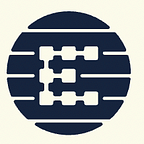Cross-verification of independent quantum devices
by the Entropica Labs Team.
To tackle how to trust the results of calculations performed on unreliable or error-prone quantum processors, a research team involving academic groups and several quantum startups comes up with a new cross-check procedure. It allows the results of a calculation performed on one device to be verified through a related but fundamentally different calculation on another device. The study was published on 2 September 2021 in the open-access journal Physical Review X.
Quantum computers are advancing rapidly, and the latest prototypes have already started to push the limits of the world’s largest supercomputers. Yet, these devices are susceptible to external influences and thus prone to errors that can change the computation result. To test for correctness, one commonly simulates a small-scale quantum computation using a classical computer.
A major challenge arises for quantum computations that are beyond the reach of our trusted classical computers, where we can no longer independently verify the results through simulation. But if we want to take full advantage of future quantum computers for critical calculations, we need a way to ensure the output is correct, even if we cannot perform the calculation in question by other means.
Let the quantum computers check each other.
Today we are happy to share a new cross-check procedure that allows the results of a calculation performed on one quantum device to be verified through a related but fundamentally different calculation on another independent quantum device.
The research team used an alternative model of quantum computing built on graph structures to generate many different computations from a common source. Then, they asked different quantum computers to perform different random-looking computations. But the computers do not know that the common source establishes a hidden connection between their computations. While the results may appear random and the computations are different, certain outputs must agree if the devices are working correctly. This is how the team could check for the reliability of the computation’s results.
The team implemented their method on 5 current quantum computers using 4 distinct hardware technologies: superconducting circuits, trapped ions, photonics, and nuclear magnetic resonance. This goes to show that the method works on current hardware without any special requirements.
Furthermore, another key advantage of the new approach is that the researchers do not have to look at the full result of the computation, which can be very time-consuming. With more and more quantum computers becoming available on the market, this technique may be key to ensuring they are doing what is advertised.
The idea’s genesis of this work comes from Singapore’s Centre for Quantum Technologies. The uniqueness of this work is in the research team, which at the end included 3 CEOs of quantum computing companies (Horizon Quantum Computing, Entropica Labs and Alpine Quantum Technologies) joining the effort with physicists in Vienna, Innsbruck and Oxford. Yes, some researchers are moving to companies, but they keep contributing to the common effort of making quantum computing reliable, and most importantly, useful.
Reference
C. Greganti, T. F. Demarie, M. Ringbauer, J. A. Jones, V. Saggio, I. A. Calafell, L. A. Rozema, A. Erhard, M. Meth, L. Postler, R. Stricker, P. Schindler, R. Blatt, T. Monz, P. Walther, J. F. Fitzsimons “Cross-verification of independent quantum devices”; Physical Review X (DOI: 10.1103/PhysRevX.11.031049)
